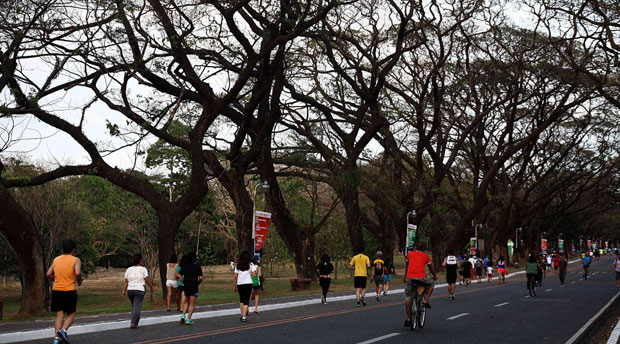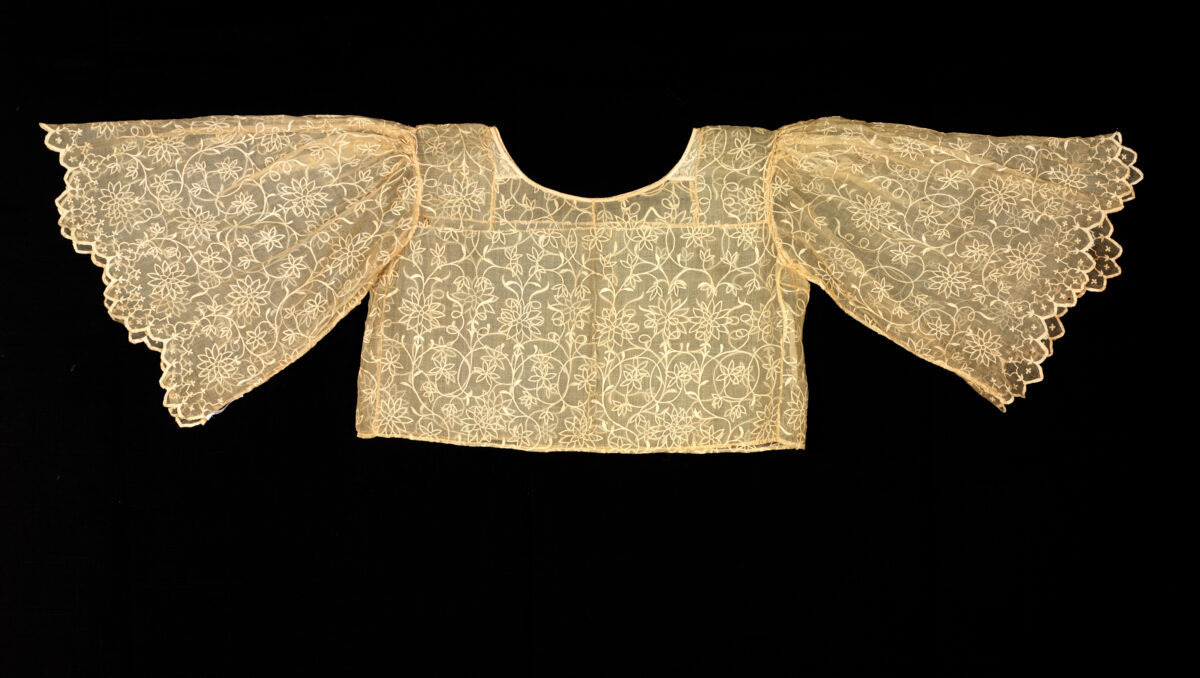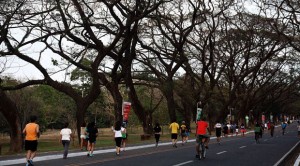
On most days, I take a bicycle ride to burn some calories and clear the cobwebs from my mind.
As soon as I leave the village gate, the city assaults me with its storm and stress: a seemingly chaotic swirl of noise, traffic, crowds and diesel exhaust.
Just another day in Metro Manila.
I take a right and almost as soon as I hit Katipunan Avenue, the traffic begins to pile up.
It gets worse where Katipunan merges with C-5. By the time I get to Ateneo, drivers are stewing in their own rage chemicals as three, four lanes bottleneck into Gate 1, and the traffic backs up all the way to Marikina.
It’s not just cars: 10-wheeler trucks, jeeps and tricycles cram the roadway, all trying to get through the pile-up.
This is urban sprawl at its worst, but what else can you do when you live in Fairview, work in Makati and your kids go to school in Katipunan or, God forbid, Manila, except spend three or four of your waking hours stuck in a metal box every single weekday.
All I can think is, “So long, suckers!” as I thread my way through the gridlock.
In such heinous traffic, a bicycle is often the fastest vehicle on the road, provided you’re not flattened by some road-raging geek or a distracted suburban mom on her cellphone in an Innova full of squealing kids.
Before I know it, I’m swerving left on C.P. Garcia, swinging wide to avoid the rattling trucks. Pedaling hard up a short incline, I make a quick right turn through a guarded gate, and I’m home free.
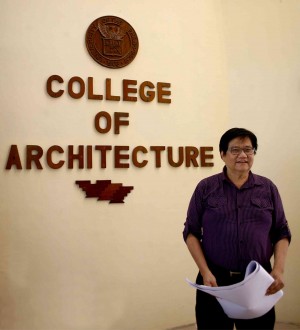
All of a sudden, I’m in a different world: tree-lined avenues and shady groves, grassy knolls and placid lagoons, elegant neoclassical buildings and modern glass and concrete structures.
My white-knuckle death grip on the handlebars eases as I relax into the slower pace, and take a deep lungful of air, hopefully scrubbed free of carbon monoxide and particulates by the abundant greenery. If I listen closely, I can hear birdsong amidst the rustling of the leaves. The soothing, pastoral vibe is a marked contrast to the adrenalin-charged trip that preceded it.
I’ve been going to the UP Diliman campus since my student days, and it has remained remarkably unchanged compared to the city around it. There are a few more buildings, the students are better dressed, and the parking spaces are now full, but overall it has remained a relative oasis amidst the creeping urbanization that has taken hold of much of the city surrounding it.
Over the last 15 years or so, as malls and high-rise developments swallow up most of Quezon City, the UP Diliman campus has become the de facto leisure park for the northern metro. True, the Quezon Memorial Circle, which is a national park, is only a stone’s throw away. But it has become an inaccessible island surrounded by a sea of non-stop traffic, with no pedestrian access.
For all practical purposes, UP has become the go-to place for QC residents, a place to get away from the city without actually having to leave the city.
On any given weekend, swarms of people converge on the campus grounds for a relaxing holiday: joggers and cyclists circle the academic oval. Kids throw frisbees around while a handful of American football enthusiasts scrimmage in the mud. Families picnic in the Sunken Garden. Lovers find isolated nooks and corners around the Lagoon. Pet lovers walk their dogs.
Even on weekdays, the campus provides city dwellers with a respite from the pressures of urban life. The dedicated bike lane around the academic oval allows UP students to navigate the campus on foot or by pedal power, but it also invites aspiring triathletes and weekend warriors to train relatively free from the worry of being run over.
All of the above begs the question: Why haven’t we built more communities like UP? That is to say, why haven’t we designed more of our cities to be livable?
Over the last two or three decades, concurrent with the global emergence of the megacities, there has been a movement among urban planners toward more livable cities, focusing on more vibrant communities, a better quality of life, and environmentally-responsible and sustainable growth. The movement seeks to remedy urban sprawl and its consequences with more compact communities designed and built on a more human scale, mixed-use developments that allow residents to live and work in the same general area, freeing them from enslavement to the car.
Originally, Philippine towns were planned this way, with a central poblacion containing the church, town hall and marketplace, surrounded by houses, all within walking distance. Residents lived, worked, shopped and played within the same compact space.
Then came the American idea of suburbanization: A network of highways separated the cities, where people worked, from the suburbs, where they lived. With this model came the commute, a daily exodus of workers going to and from work. This model was made possible by relatively cheap fuel prices (at least at that time) and the rise in car ownership, but it also came at a cost. Precious real estate had to be allocated for parking, which meant fewer green spaces in a sea of grey concrete.
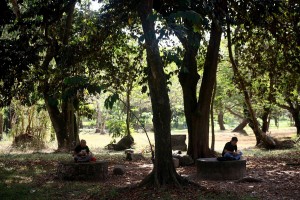
As more and more people flocked to the city from the rural areas, suburbs got farther and farther away from the city centers. This marked the beginning of sprawl, and all the ills associated with it. Rising fuel prices, traffic congestion and pollution have underlined the need to reexamine our priorities where city planning is concerned.
In recent years, architects and property developers have attempted a return to mixed-use developments, with varying rates of success.
Because of its unique position as a state-run academic institution, UP has managed to remain relatively untouched by urban blight. Apart from being a school, however, it is also an example of a planned community, a laboratory for livability, as it were.
“UP Diliman is unique: It’s a microcosm of Philippine society,” says architect Cristopher Stonewall Perez Espina, director of the university’s Office of Planning and Design Initiatives (OPDI), the body in charge of land use, master planning and design for all units of the UP system.
“You have students from all over the Philippines; you have rich and poor, Christians and Muslims. We’re trying to make UP Diliman into an area where the community has choices: There’s a wide range of areas to stay, places to shop, eat and recreate, all within walking distance.”
Espina believes that despite the university’s unique situation, it can impart lessons for other communities seeking to become more livable.
Originally from Cebu, Espina comes from a family of architects. His parents established the family firm of Espina, Perez, Espina and Associates, four of his siblings and two of his children are architects, and he is married to landscape architect Mary Anne Espina, current dean of the UP College of Architecture. He has been teaching in Diliman since he finished his masters in architecture in 1974.
Three years ago, Espina was tapped to head the Office of Planning and Design Initiatives, with the view in mind of developing master plans for preserving UP’s distinct architectural character and overseeing its future growth.
Although the UP master plan has yet to be finalized, Espina says other urban planners can take their cue from some of the guidelines that the design office has formulated toward building more livable communities.
One of the key guiding principles is to build on a human scale, he says, which means limiting the size of buildings so they don’t overpower their surroundings, and to make sure that distances between sites are within walking distance.
“One principle we have adopted is what we call contextualism and urban integration, meaning what we want to do is consider the unique setting of the campus (to) ensure that its design responds successfully to its surroundings,” he says.
“If you’ll notice, unlike the Ateneo for instance, there is no boundary between UP Diliman and its surroundings. It blends with the community. That is how the national university should project itself, that we are a university of the people. That’s what we mean by contextualism.”
Another guideline is known as the “one university” concept.
“We have to set a common architectural character for the sites and buildings, so that if you go to UP in Cebu or Tacloban, you will immediately know that it’s UP.”
Although UP’s architectural character was initially set by architect Cesar Concio, who designed the campus’ first buildings in the neoclassical style when the university moved from Manila to Diliman in 1949, subsequent structures have been designed in other, more modern styles.
The master plan also seeks to uphold the principle of a “green” UP, through the promotion of environmentally sustainable and green architecture and design.
The UP Diliman campus is one of the few remaining places in the metro where, during certain times of year, you can still see migratory birds, attracted by the well-preserved forests and waterways, taking a pause from their long flight south of the Asian mainland.
“We want to have a healthy coexistence of people and wildlife, that’s why we want to develop UP into an urban wildlife habitat,” says Espina.
This, he adds, require four elements to succeed: the presence of fruit-bearing trees for food, water in the form of lagoons and creeks, adequate forest shelter, and places where the animals can rear their young free from human intervention.
In keeping with this principle, he adds, contractors for building projects within the university are required to plant a tree for every 100 square meters of built area. UP Diliman’s wetlands, including the lagoon and the creeks that feed it are also now protected areas.
Since the open exchange of ideas is one of a university’s primal reasons for being, Espina says the campus has been designed to have what he calls “a hierarchy of discourse areas.”
“These are venues for speech and discourse within the university, areas where you can have a lot of interaction between groups in the community. For instance, the largest discourse area is the amphitheater, where the university president can address the entire student and faculty body. But there are also spaces in the buildings, and open areas where smaller groups can communicate.
“We are trying to have more vibrant public spaces,” he adds. “We are organizing events such as exhibits, performances of music and dance, as part of community life, to promote culture.”
The idea of free and open exchange also extends to the open design of the campus.
“We have a barrier-free design in order to uphold the university tradition of academic freedom through openness and collaboration,” says Espina. “We welcome everybody inside.”
The Diliman campus is a pedestrian and bicycle-friendly zone. Apart from the dedicated bike lane around the academic oval, there are bike racks in various parts of the campus, and various pedestrian paths and bikeways that make navigating the campus without a car easy.
All of this might suggest a kind of nostalgia for a slower pace of life in the not-too-distant past, but Espina says the master plan is forward-looking as well.
One area in which this is evident is in the adoption of innovative technologies.
“We are trying to make our newer buildings smarter buildings,” he says, meaning they incorporate features such as connectivity and digital tracking systems. New technologies also come in the development of transportation, communication, utilities and other support systems.
For instance, the Diliman campus has a futuristic monorail system in the testing stage, although this won’t be replacing the old Ikot jeepneys any time soon. In the near future, however, the Ikot route might be plied by electric-powered vehicles, as the UP master plan calls for a shift to cleaner and greener energy.
Other plans include encouraging entrepreneurship, tourism development and urban agriculture.
In the light of the recent spate of natural disasters, including the supertyphoon that laid UP Tacloban to waste, preparing for possible natural calamities is part of the planning process. (Espina says the UP campus in Leyte may have to be rebuilt from scratch once the “no-build” zone has been delineated.)
“In UP, in our practice, we study the response of our designs to the various natural as well as man-made hazards,” he says. “We included the safety of our buildings in UP in our general planning design guidelines.”
All the above mentioned principles might seem easy enough to apply to a state-run institution like UP, but what about the “real world”? Is it still possible to revert to cities built on a more human scale?
“I think so,” says Espina. “You have to build vertically, but it’s still possible to plan for mixed-use buildings where you live, work and recreate in the same general vicinity. You can still design communities so you’d have choices.” •

